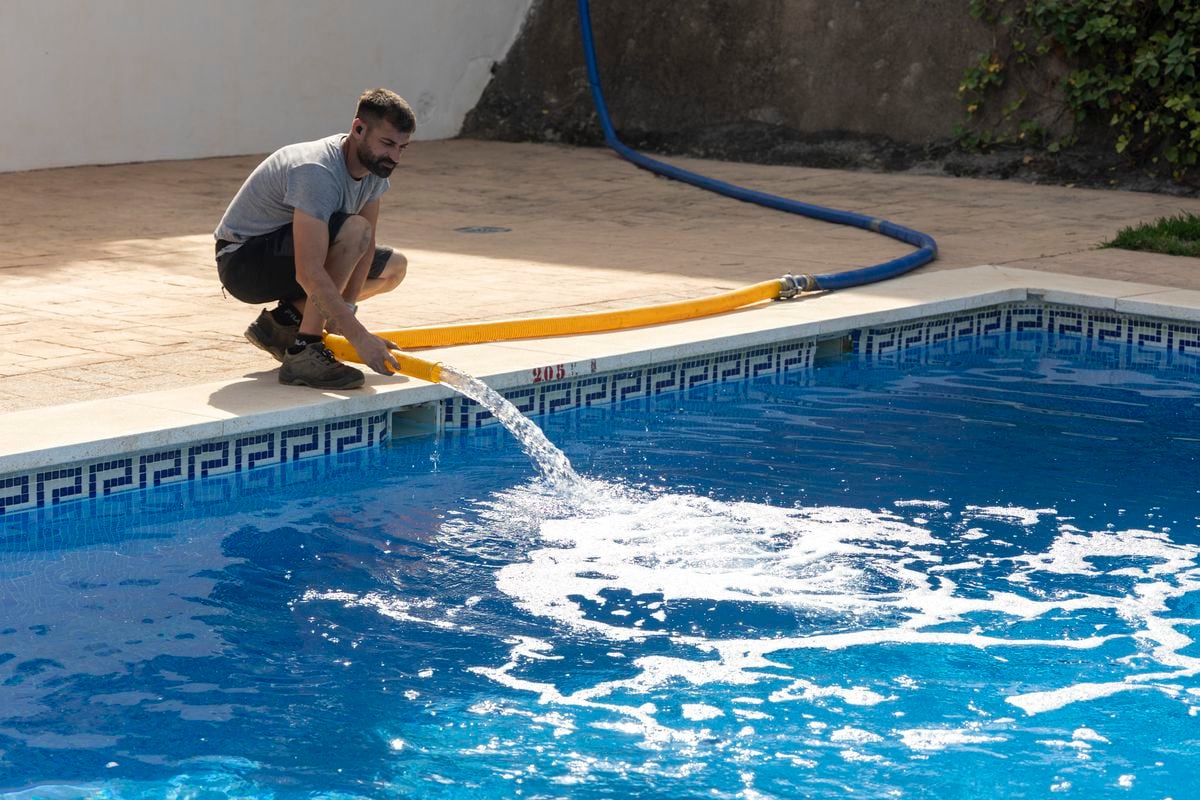Ten tons of slime, muck, trash, and most of all, wipes.
That is the mass of the island of waste that had emerged in full view of all the people of Cordoba in the Guadalquivir, a few meters from the Roman Bridge, and that the Junta de Andalucía has made disappear throughout this week with the help of a backhoe.
The 10,000 kilos of waste and sand contaminated by them have been transferred to a landfill, where they will be treated, as explained to this newspaper by a spokesman for the Ministry of Sustainability, Environment and Blue Economy.
“As long as wipes continue to be thrown and the fecal waters are not treated, the problem will persist,” warns José Larios, a prominent Andalusian ecologist, who was the one who drew attention to the floating raft of debris.
It was a photo of the islet of sediment published on their social networks that alerted to the mass of waste, especially sanitary napkins, that was looming in an area that has been a protected space since 2001. The island of waste had begun to form in 2020 after a huge flood that accumulated garbage in two of the eyes of the Roman Bridge and in the middle of the river at the height of the Torre de La Calahorra.
"In 2021, part of the bridge was cleaned, but it was decided to keep the other part," says Larios, president of the Fundación Transición Verde.
The vegetation, fed by the silt and the earth that is carried away by the current, hid the enormous mass of towels that had formed the new atoll.
The rains of the last few weeks washed away the mud and exposed the rubbish base of the island once again.
The Board argues that its cleanup was planned within the Biodiversity Maintenance project in the Sotos de la Albolafia Natural Monument to preserve the biodiversity of that space and that it included the recovery of the Enmedio and Téllez mills, right in front of the island of waste, eliminating non-native vegetation, among other measures.
Raft of wipes in the Guadalquivir riverbed as it passes through Córdoba, after and before cleaning.
Paco Bridges
The company Tragsa, in charge of this project, is the one that has directed the dissolution works of the islet of wipes.
A backhoe has transferred the remains of sediment and contaminated mud to the landfill, while distributing the clean ones in the interior areas of Sotos de la Albolafia.
Operators have also been involved in the dismantling operation, carrying out manual labor.
"We want to take the opportunity to raise awareness of the very serious problem of the misuse of wipes, which in no case should be flushed down the toilet, because they pose an environmental threat and have a high cleaning cost," says the spokesman for the ministry.
The Córdoba City Council figures the amount it invests to remove this type of material at one million euros.
"As long as a storm tank is not built to prevent river water from mixing with fecal water and citizens continue throwing wipes, the problem will persist," warns Larios, who draws attention to the garbage that accumulates elsewhere. from the river and which goes more unnoticed because it has not been concentrated in a place as symbolic as the stretch in front of the Torre de La Calahorra.
Riparian vegetation on waste
Riverside vegetation typical of the area such as reeds, bulrush, tamarisk and even poplars had grown on the thousands of towels.
"Only those of us from Córdoba knew that the island was not natural," Larios points out.
And for those who, like him, paid attention to the fauna of the area, in addition to seeing rats running wild, it was also common to see a little bittern —the smallest species of heron that nests in that part of the Guadalquivir— with the wipes hooked on its jagged beak.
Islet formed by wipes and other materials that appeared after lowering the Guadalquivir riverbed as it passed through Córdoba capital.PACO PUENTES
The environmentalist also draws attention to the effects of birds feeding on fish that may have been in contact with the remains of feces and makeup that usually accompany the wipes.
"This material does not decompose and its treatment for waste companies is complicated because it is not entirely inert if it contains feces, but it is not organic either," he warns.
The garbage island that went unnoticed by many visitors had attracted the curiosity of the neighbors these days when they learned that the vegetation that appeared did not exactly grow from the ground.
The work to make it disappear has also entertained many people from Cordoba, tourists and the media.
"That no one would have noticed is a matter of sensitivity," laments Larios, who hopes that, at least, it has served to raise awareness "of the environmental and economic impact" of dumping waste.
You can follow CLIMATE AND ENVIRONMENT on
and
, or sign up here to receive
our weekly newsletter


/cloudfront-eu-central-1.images.arcpublishing.com/prisa/R65LZW6EVZDNDFZPK25RWRQTVY.jpg)

/cloudfront-eu-central-1.images.arcpublishing.com/prisa/ZOUT7RD523TH3CPHDYIC2WXX5M.jpg)
/cloudfront-eu-central-1.images.arcpublishing.com/prisa/S4BTGDA7TFEMFBJYT4VGJQNXEY.jpg)









